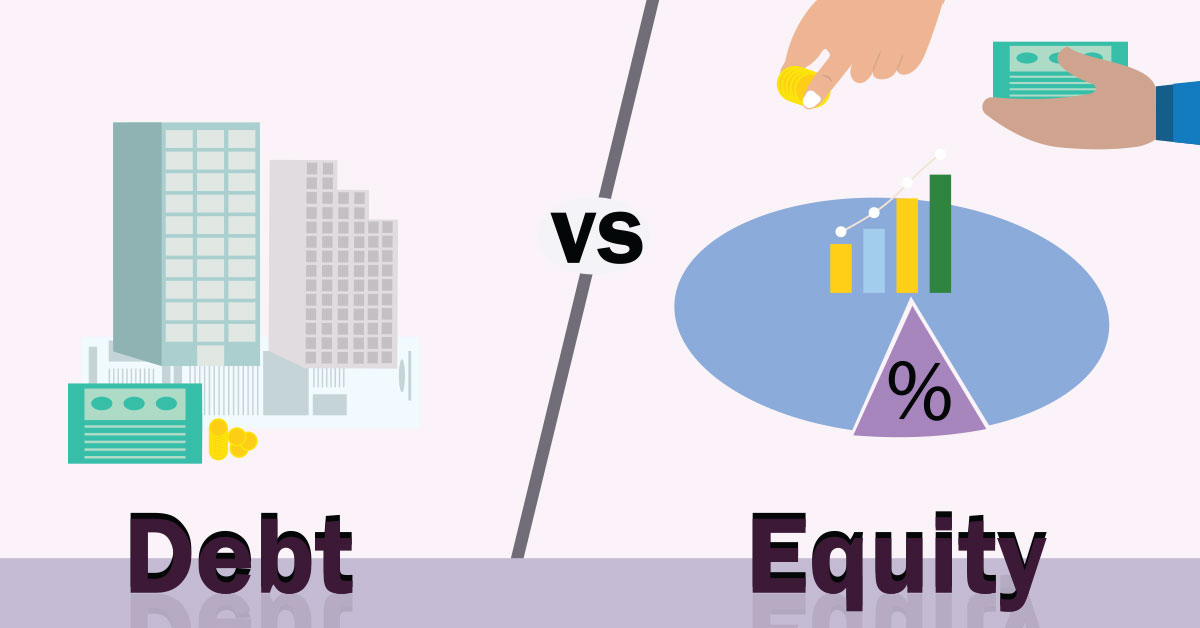
Posted on October 22, 2025 by MergerDomo
Debt vs Equity Funding for SMEs in India: Which Is Smarter for Your Business
Debt funding means borrowing money and repaying with interest, while equity funding means selling ownership for capital.
For most Indian SMEs, debt funding remains the smarter,
faster choice — it preserves ownership and takes less time to process.
Let’s break it down
1. What Is Debt
Funding?
Debt funding allows your business to raise capital by
borrowing from banks, NBFCs, or private financiers — repaid over time with
interest.
Common SME Debt Options
- Term
loans for expansion
- Working
capital limits (OD/CC)
- Invoice
or bill discounting
- Equipment
or machinery loans
- Project
or trade finance
According to Business Standard (Jun 2025),
Credit to MSMEs in India crossed ₹ 40 trillion in FY 2025,
growing nearly 20% year-on-year — proof that debt remains the backbone
of SME growth.
Advantages
- You
retain 100% ownership
- Interest
payments are tax-deductible
- Predictable
repayment schedule builds discipline
Challenges
- Regular
repayment pressure
- Collateral
or guarantee may be required
Example:
A Pune-based manufacturing SME with ₹ 15 Cr turnover raised ₹ 2 Cr in working
capital via an NBFC through MergerDomo — improving cash flow without giving
up equity.
2. What Is Equity
Funding?
Equity funding means selling a part of your company’s
ownership (shares) to investors in exchange for capital.
It’s ideal for high-growth or early-stage startups needing patient
capital and mentorship.
Common investors: angel networks, venture capital
funds, private equity firms.
Advantages
- No
repayment obligation
- Strategic
guidance and networks from investors
Challenges
- Ownership
dilution
- Decision-making
power may reduce
- Exit
expectations add long-term pressure
According to Tracxn via Business Standard (Jun 2025),
Indian startups raised USD 4.8 billion in H1 2025, down 25% YoY —
showing how equity capital can be cyclical and slower compared to debt.
3. Debt vs Equity — Side-by-Side Comparison
| Parameter |
| Equity Funding | |
| Ownership | No dilution | Shared with investors | |
| Repayment | Fixed EMIs + interest | None; profit sharing | |
| Risk | Higher repayment burden | Lower financial risk | |
| Lower (≈ 10–14% p.a. per SBI & Mahindra Finance) | Higher (investors expect 20–30% ROI) | |
| Ideal for | Profitable, cash-flow stable SMEs | Early-stage, high-growth startups | |
| Funding speed | 2–4 weeks | 2–6 months | |
| Control retained | ✅ Yes | ❌ Partially |
4. How to Get Debt
Funding via MergerDomo
MergerDomo simplifies SME funding in 4 quick steps:
1️. Share your requirement
– Fill our Debt Funding Form
2️. Get matched – We connect you with trusted banks,
NBFCs, and private financiers
3️. Compare offers – Review interest rates,
tenure, and terms
4️. Finalize – Submit documents and close
funding confidently
Documents Required
- Last
2 years’ audited financials
- Bank
statements
- GST
returns
- KYC
& business registration
Under Government guidelines (PIB, 2025), banks must provide loan decisions within 14 working days for SME loans up to ₹ 25 lakh — showing policy support for faster approvals.
5. How to Choose Between Debt & Equity for Your SME
| Factor |
| Go for Equity if… | |
| Cash flow stability | You have steady revenue | You’re pre-revenue or scaling fast | |
| Business age | 3+ years, profitable | Early-stage or tech-driven | |
| Control preference | You want full ownership | You want investor guidance | |
| Funding speed | You need money fast | You can wait 3–6 months | |
| Purpose | Working capital / expansion | Innovation / R&D / scaling |
The RBI FAQ on MSME Lending confirms that banks can sanction composite loans up to ₹ 1 crore (term + working capital) — making debt a flexible option for SMEs.
6. India’s SME Funding
Landscape 2025
- MSME
credit = ₹ 40 trillion, growing ~20% YoY (Business Standard, 2025)
- MSME
share in total bank lending: 17.7%, up from 15% last year (IBEF, 2025)
- Credit
gap: ₹ 30 lakh crore (≈ USD 112 bn) still unmet (IAMAI × GetVantage Report 2023)
- Interest
subvention: 2% rebate for GST-registered MSMEs (RBI Scheme)
- SME
count: 6.3 crore units (31% manufacturing, 36% trade, 33% services) (Equifax 2023 Report)
These numbers confirm: debt funding dominates SME finance in India, supported by government incentives and strong lender appetite.a
7. Key Takeaway
- Debt
funding = control + discipline
- Equity
funding = mentorship + long-term growth
If you’re an established SME with consistent cash flow,
debt is faster, cheaper, and smarter — and MergerDomo makes it
effortless.
Start Your SME Funding Journey

